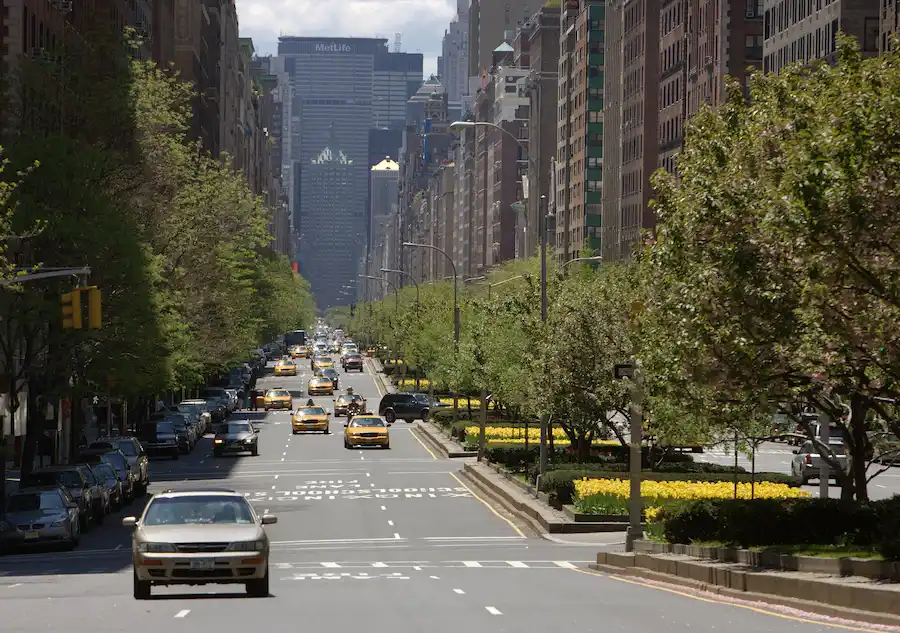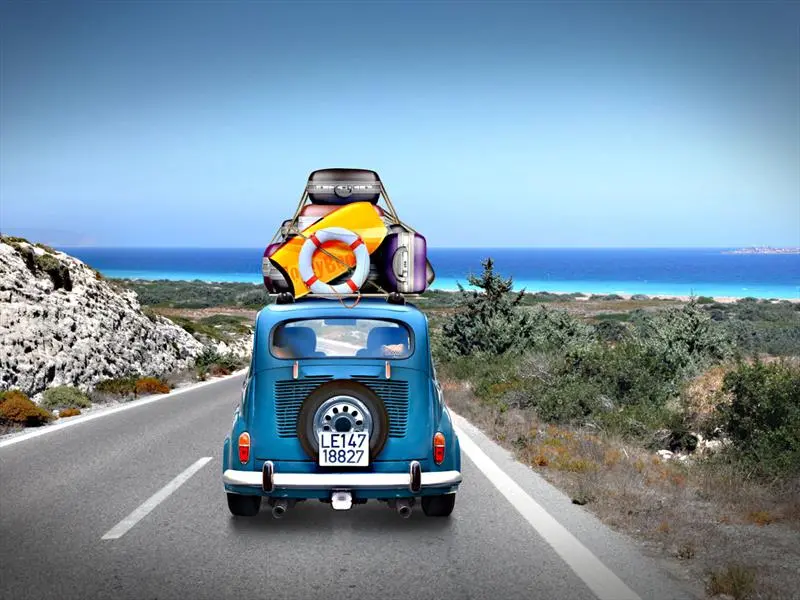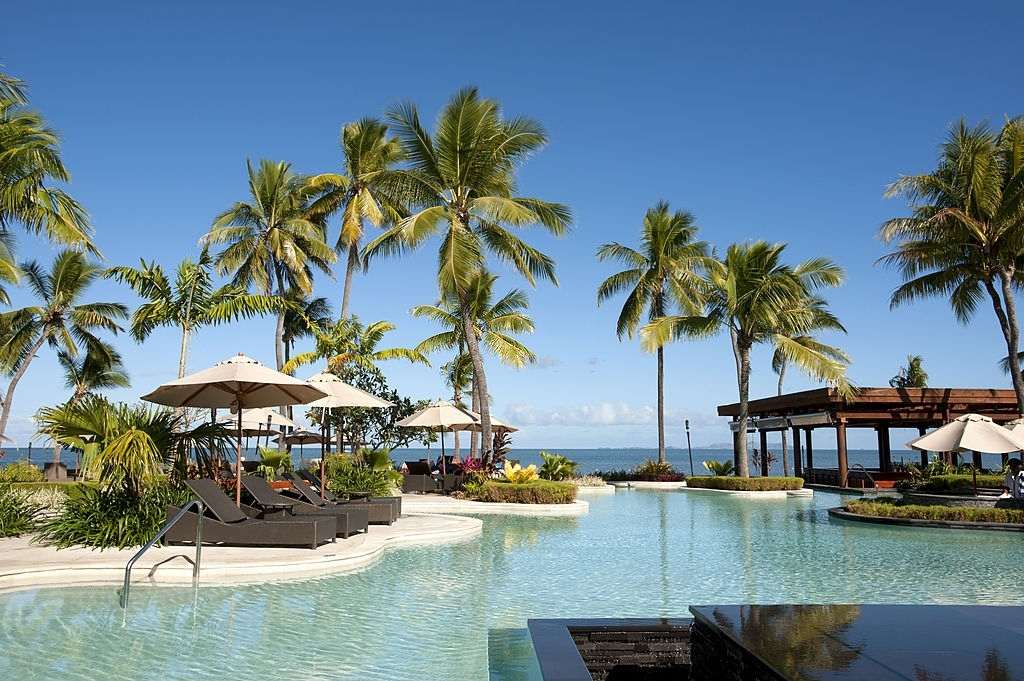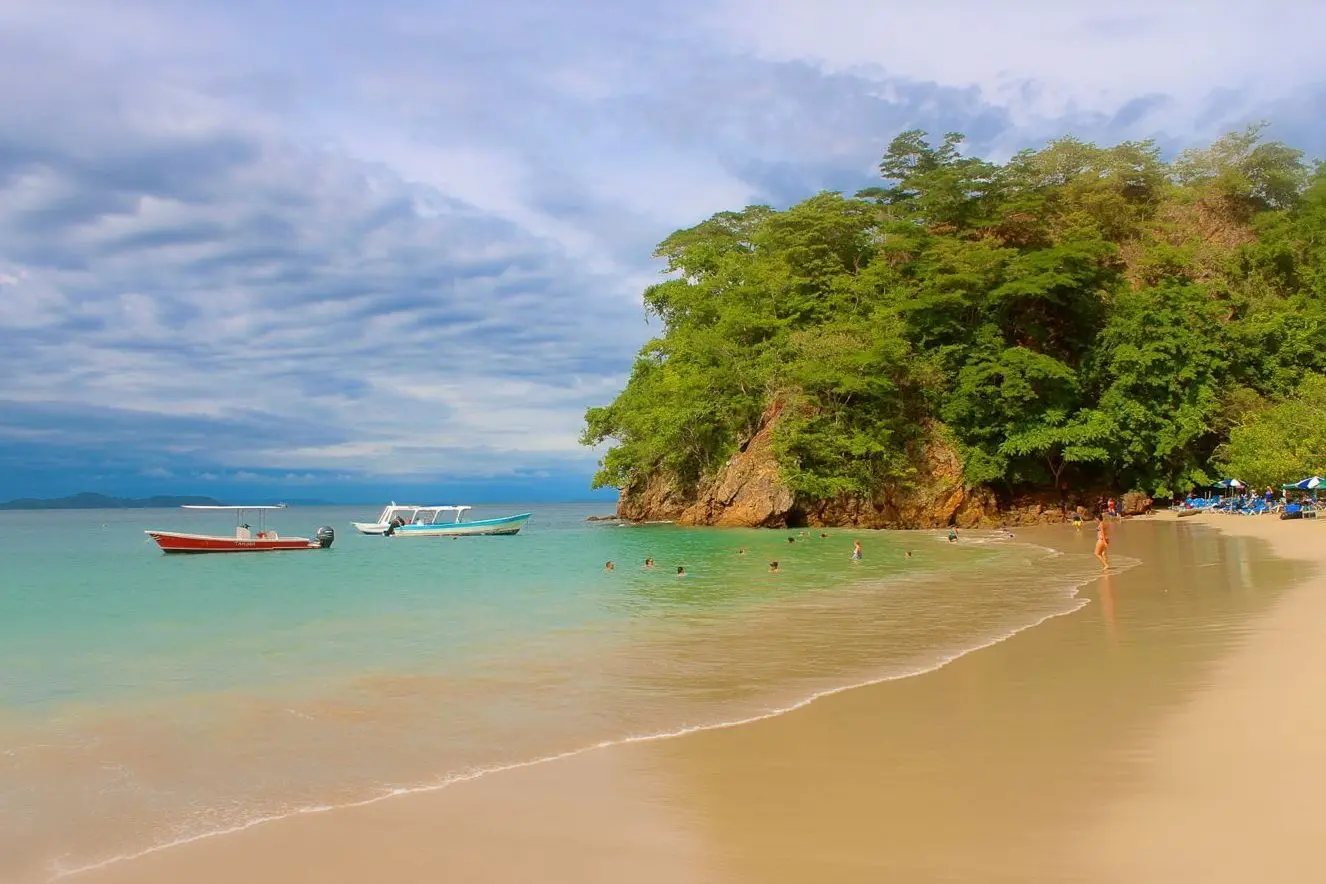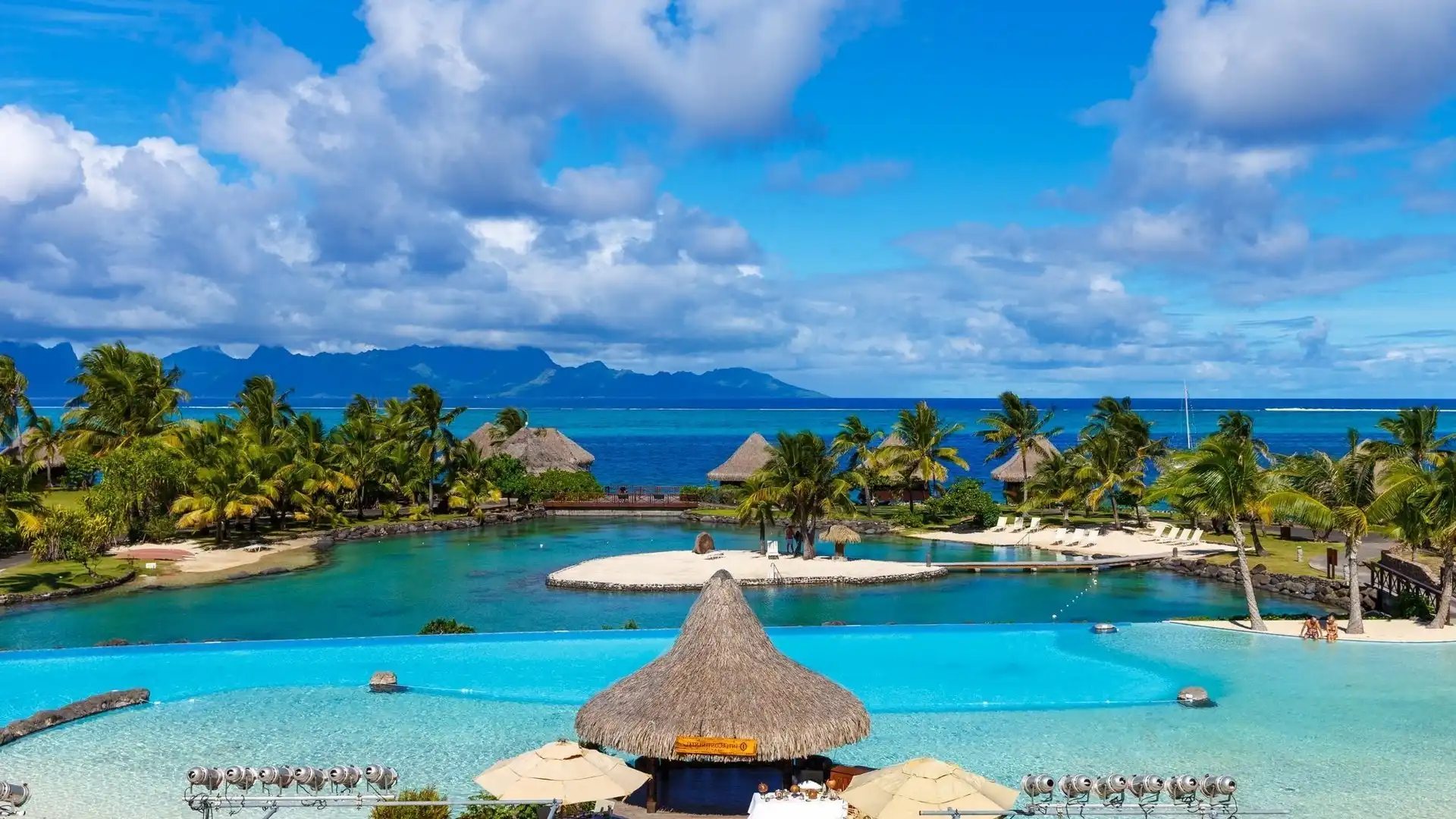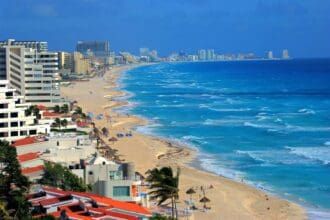Alaska is the largest state in the U.S., renowned for its stunning natural beauty, pristine wilderness, and abundance of wildlife. From towering mountains to vast glaciers, the state offers some of the most breathtaking scenery in the world. It is often called “The Last Frontier” for a reason—it’s one of the most untamed and rugged places on Earth, full of adventure, history, and hidden gems waiting to be discovered.
If you’re a nature enthusiast, an adventure seeker, or someone who simply wants to disconnect from the hustle and bustle of modern life, Alaska has everything you could hope for. Whether you’re trekking through Denali National Park, enjoying a scenic train ride on the White Pass & Yukon Route Railroad, or witnessing the Northern Lights, there’s something here to captivate every traveler. Here’s a comprehensive guide to help you discover Alaska’s treasures.
1. Museum of the North
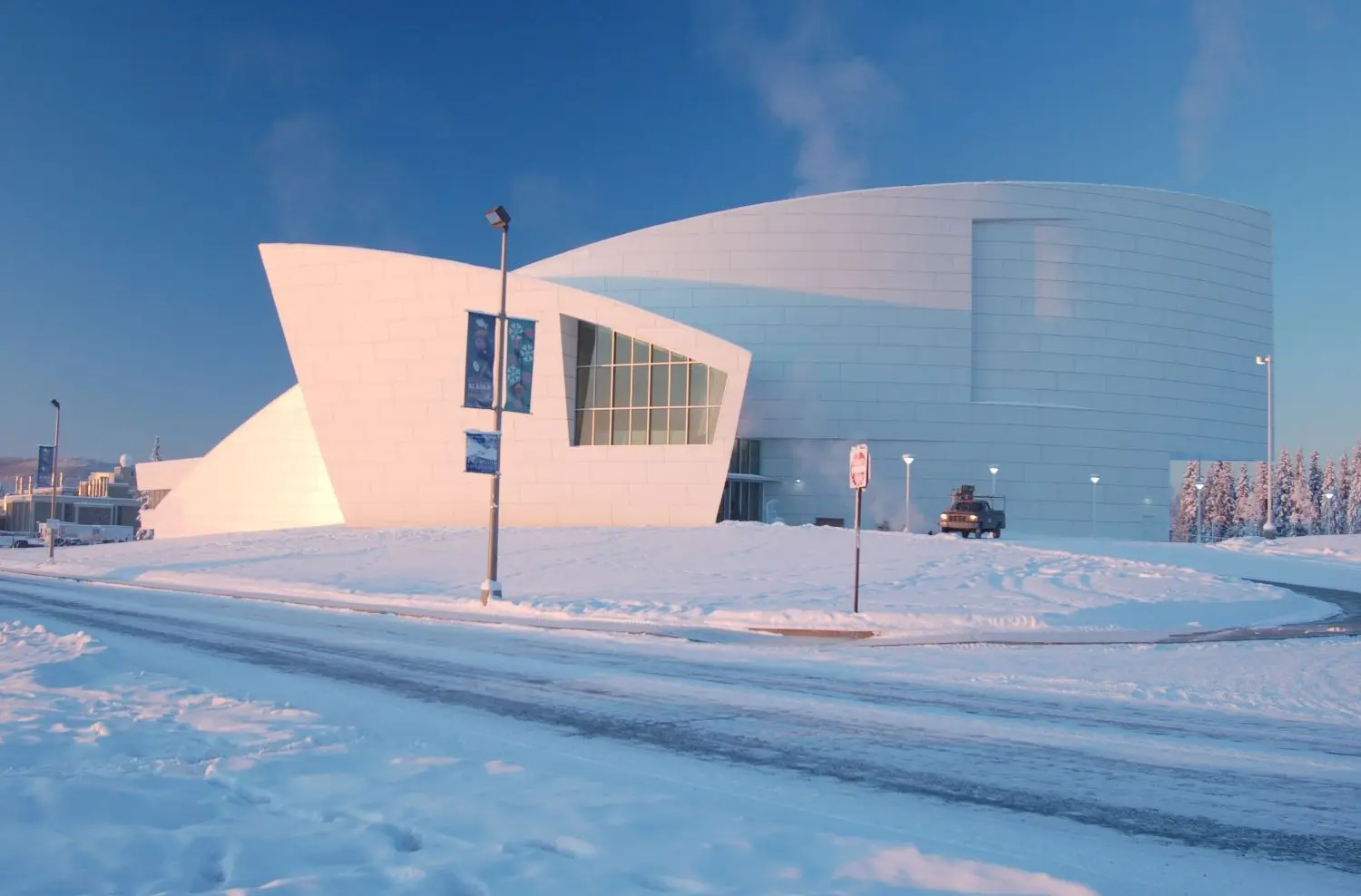
Located in Fairbanks, the Museum of the North is a must-visit for anyone wanting to dive deeper into Alaska’s rich history and diverse cultures. The museum showcases the state’s art, culture, and history, with permanent exhibits featuring everything from ancient Inuit ivory carvings to contemporary Alaska Native art.
The museum’s Rose Berry Art Gallery holds one of the most extensive collections of Alaskan art, allowing visitors to marvel at the region’s creativity over the centuries. One of the unique aspects of this museum is its architecture, which mimics the natural surroundings with sweeping lines and curves, offering a reflection of the Alaskan landscape.
2. White Pass & Yukon Route Railroad
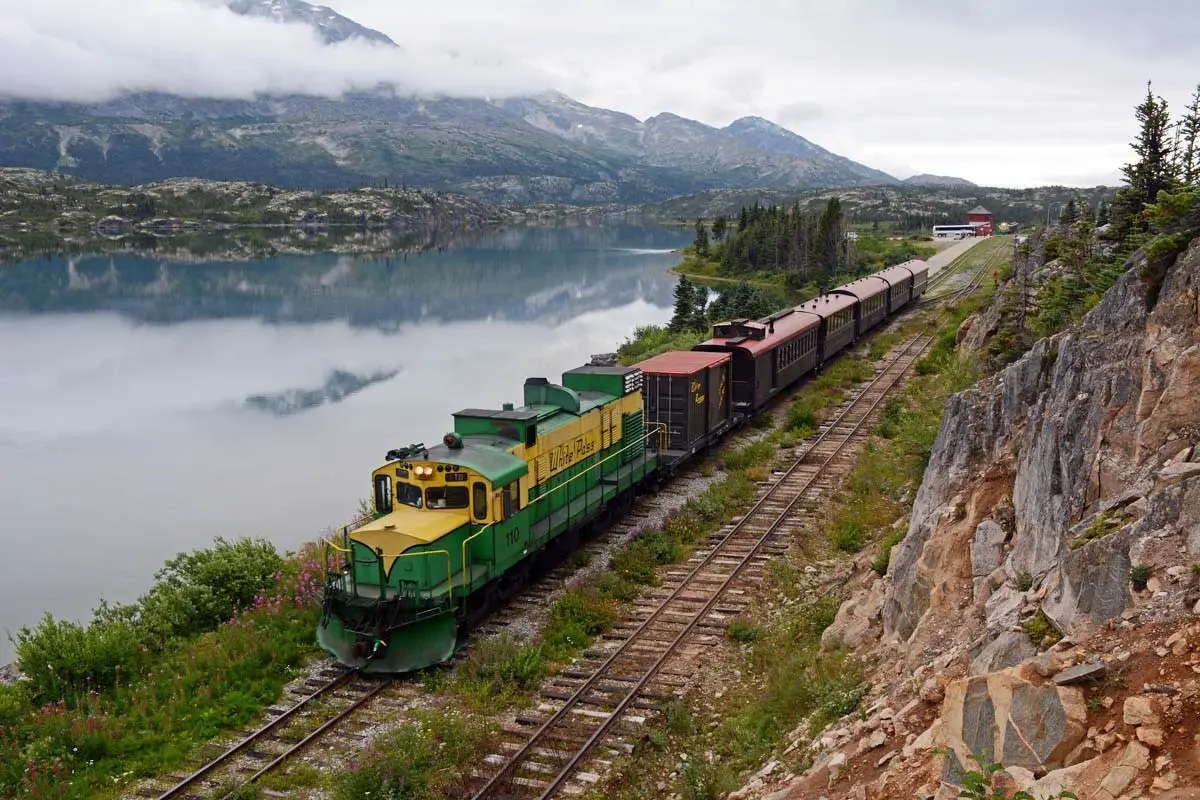
This historic railway, established in 1898 during the Klondike Gold Rush, takes you on a journey through one of the most scenic areas of Alaska. The train climbs over 3,000 feet, winding through dense forests, across trestle bridges, and past sparkling waterfalls. Along the way, you’ll see stunning views of mountains and gorges.
As you travel on vintage railcars with wide windows, you’ll get a glimpse into the past, as the White Pass & Yukon Route Railroad was once essential in transporting gold from Alaska to Canada. Whether you’re in the mood for a short trip or a longer ride, this experience is an essential part of discovering Alaska’s history and beauty.
3. Denali National Park and Preserve
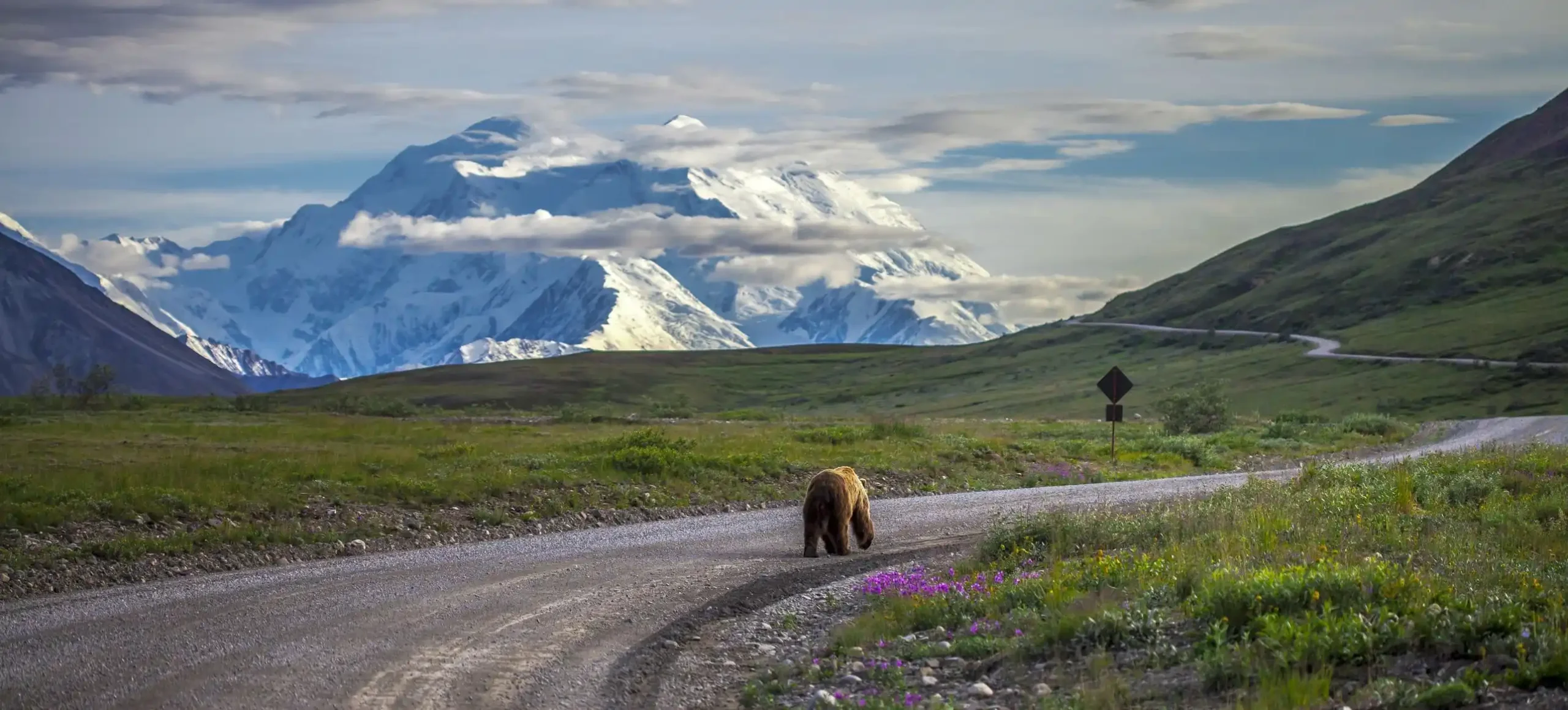
Denali National Park is a place where nature thrives, with over six million acres of wildland filled with towering peaks, tundra, and wildlife. The park is home to Denali, the highest peak in North America at 20,310 feet, and offers unparalleled opportunities for outdoor adventures.
Visitors can enjoy a variety of activities, such as hiking, camping, and wildlife watching. The park’s flora and fauna include moose, grizzly bears, wolves, and caribou, which can often be spotted from the park’s main road. For a truly unique experience, consider taking a helicopter tour for a bird’s-eye view of the park’s landscapes. Alternatively, visitors can opt for a guided hiking tour or a camping trip to enjoy a more immersive experience.
4. Juneau Whale Watch
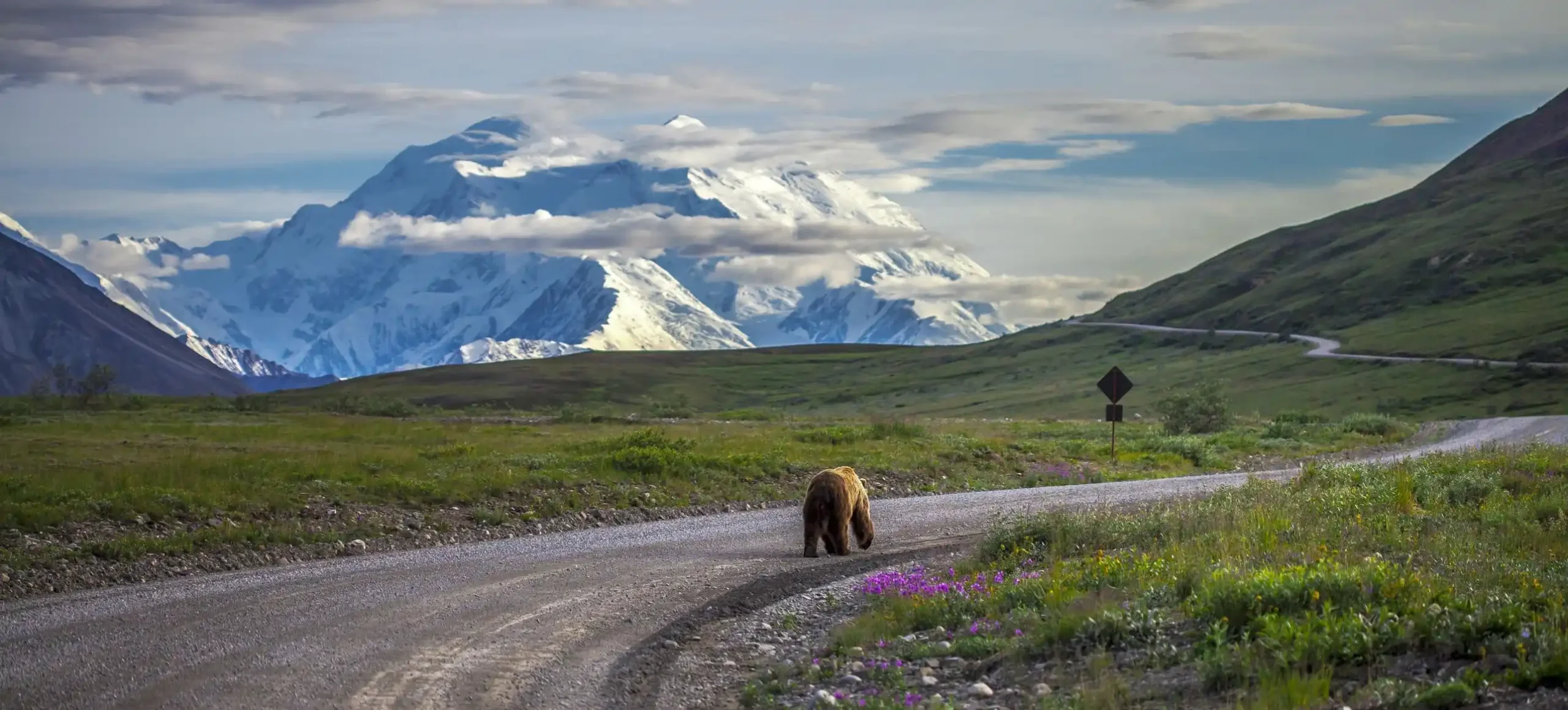
Known as the whale-watching capital of Alaska, Juneau is the perfect destination for anyone looking to get up close with the majestic creatures that inhabit its waters. The waters surrounding Juneau are teeming with humpback whales, which come to the region to feed on krill during the summer months.
Book a whale-watching cruise or jet boat ride to see not only whales but also sea lions, bald eagles, and other wildlife. The serene setting and abundance of marine life make Juneau a must-visit destination for nature lovers.
5. Hubbard Glacier
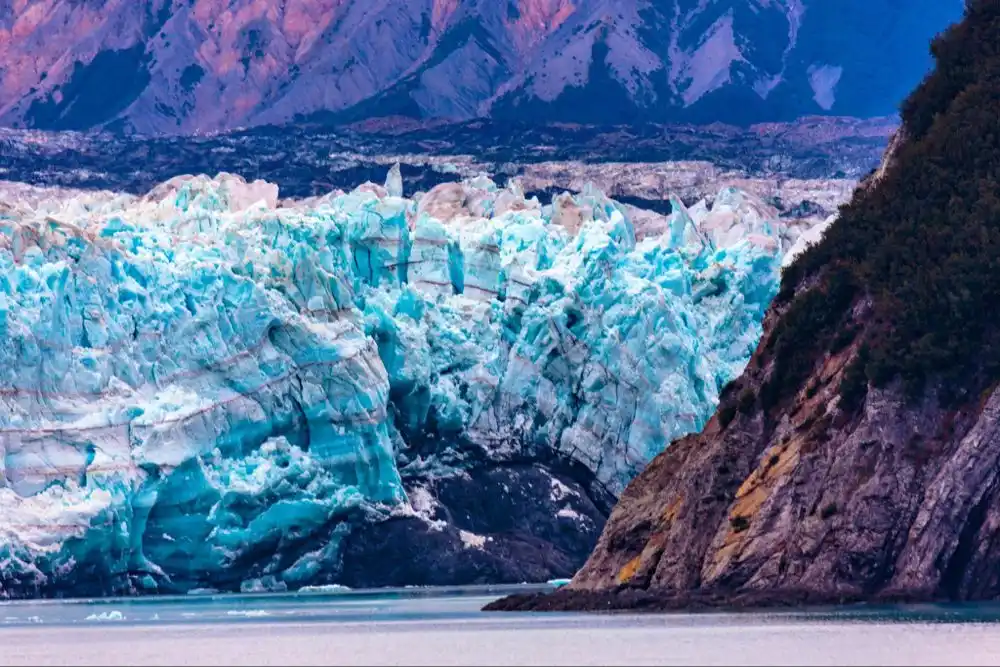
Hubbard Glacier is one of the most impressive glaciers in Alaska, stretching over six miles long. Located in Yakutat, it’s considered one of the most accessible tidewater glaciers in the world. The glacier is incredibly dynamic, with towering icebergs and steep, jagged cliffs of ice reaching heights of 400 feet.
A visit to Hubbard Glacier is an unforgettable experience, particularly for those on Alaskan cruises that navigate through icy waters to get closer to this natural wonder. The glacier’s massive size and raw beauty leave a lasting impression.
6. Anchorage Market
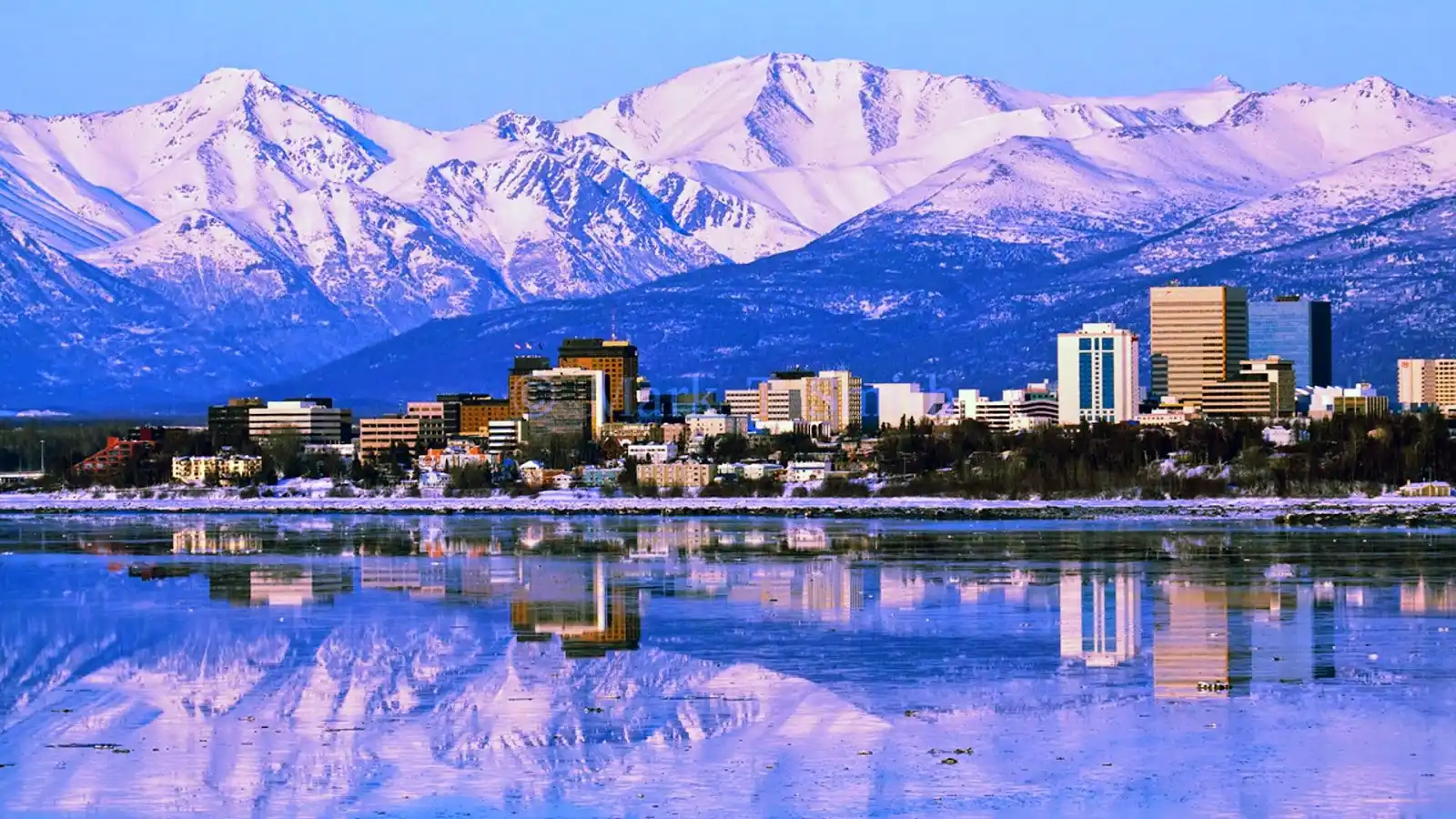
For a more relaxed experience, head to Anchorage Market, an outdoor market that operates from May to September. Located in the heart of Anchorage, this vibrant market is full of local food vendors, artists, musicians, and craftsmen.
Whether you’re looking to buy handcrafted jewelry, artwork, or sample local dishes, Anchorage Market offers an authentic taste of Alaskan culture. Enjoy live music performances, fresh produce, and a variety of local goods in a fun, family-friendly atmosphere.
7. Seuss House
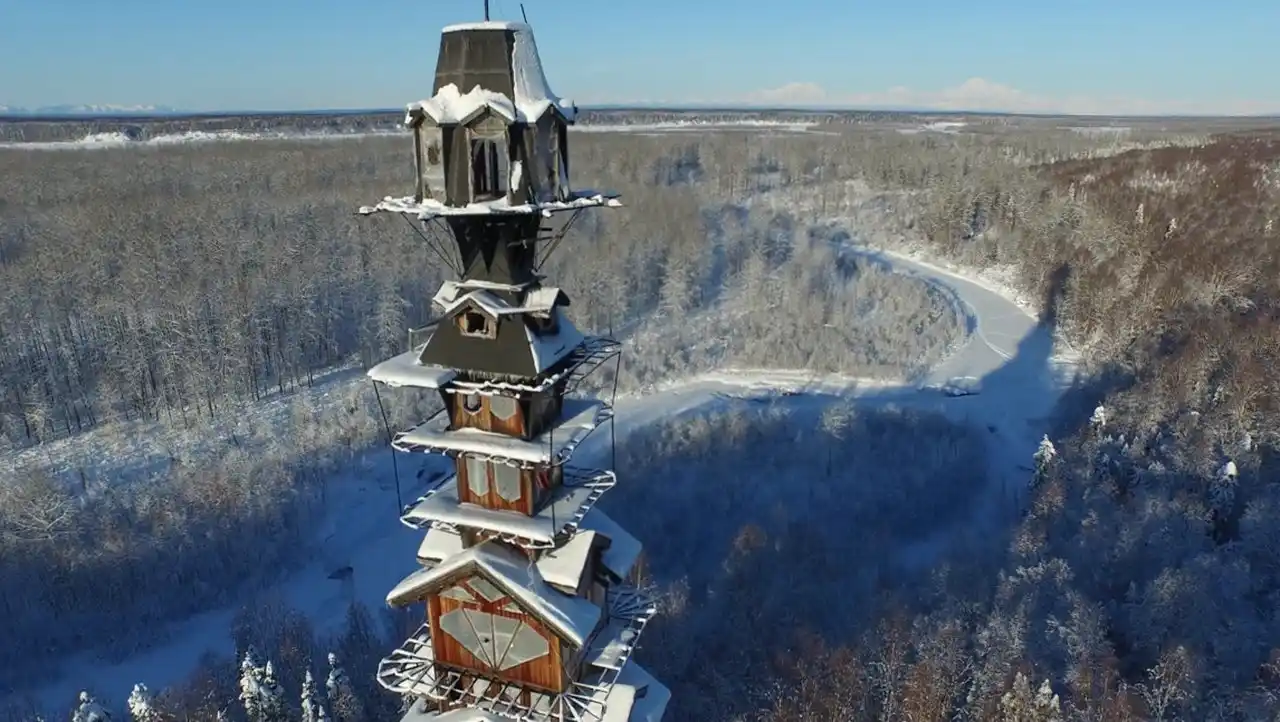
Known as the “mystery house” of Alaska, Seuss House is a unique structure located between Willow and Talkeetna. This quirky house is a 185-foot tall, narrow tower that stands isolated among trees and rushing rivers. It has become an iconic symbol of Alaska’s eccentricity and remains a favorite of those looking to explore the state’s lesser-known landmarks.
8. Kenai Beach
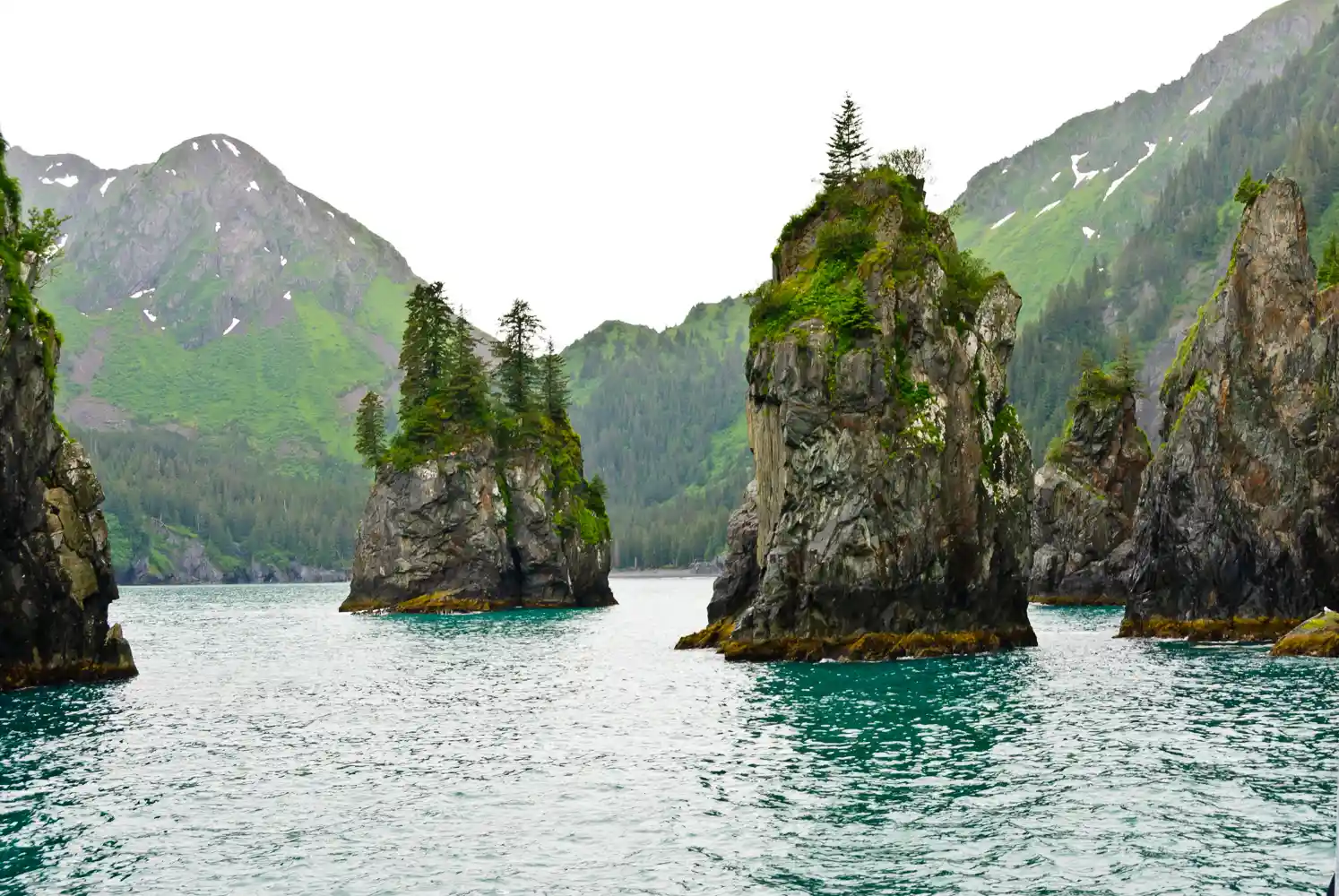
Kenai Beach is another iconic Alaskan destination, particularly popular for its salmon fishing. Located along the Kenai River, this beach attracts visitors looking to catch the prized Kenai River salmon. Fishing enthusiasts can be seen lining the banks, eagerly waiting to hook a salmon.
In addition to fishing, the area offers opportunities for golfing, relaxing by the beach, or enjoying a quiet tea time with family while overlooking the natural beauty of the region.
9. Kennicott Ghost Town
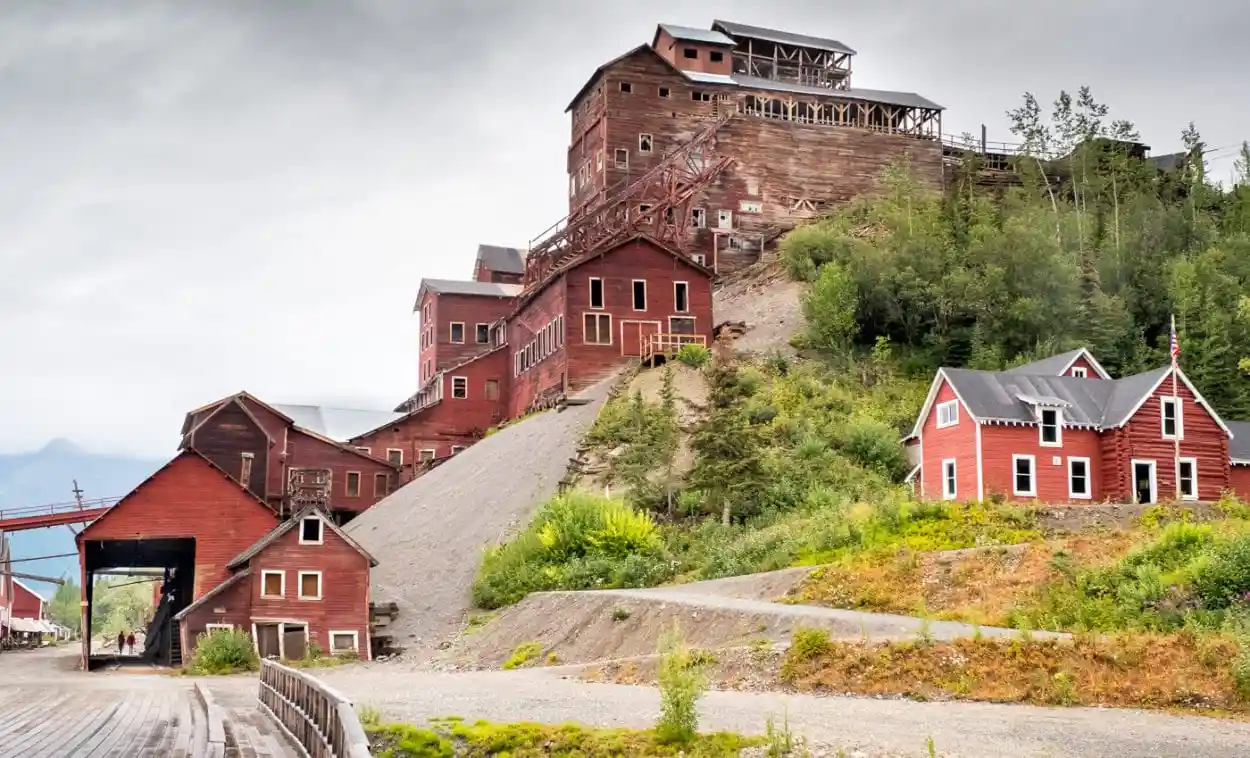
Kennicott is a once-thriving mining town that has now become an eerie ghost town. Founded in the early 1900s, the town was a bustling hub during the copper mining boom. However, as the mine closed, the people left, leaving behind an abandoned community that includes schools, post offices, and shops.
Today, Kennicott is a fascinating destination for history buffs and those seeking a glimpse into Alaska’s mining past. Take a guided tour to learn about the history of the town, and explore the historic ruins that offer insight into the lives of those who once lived there.
10. Tongass National Forest
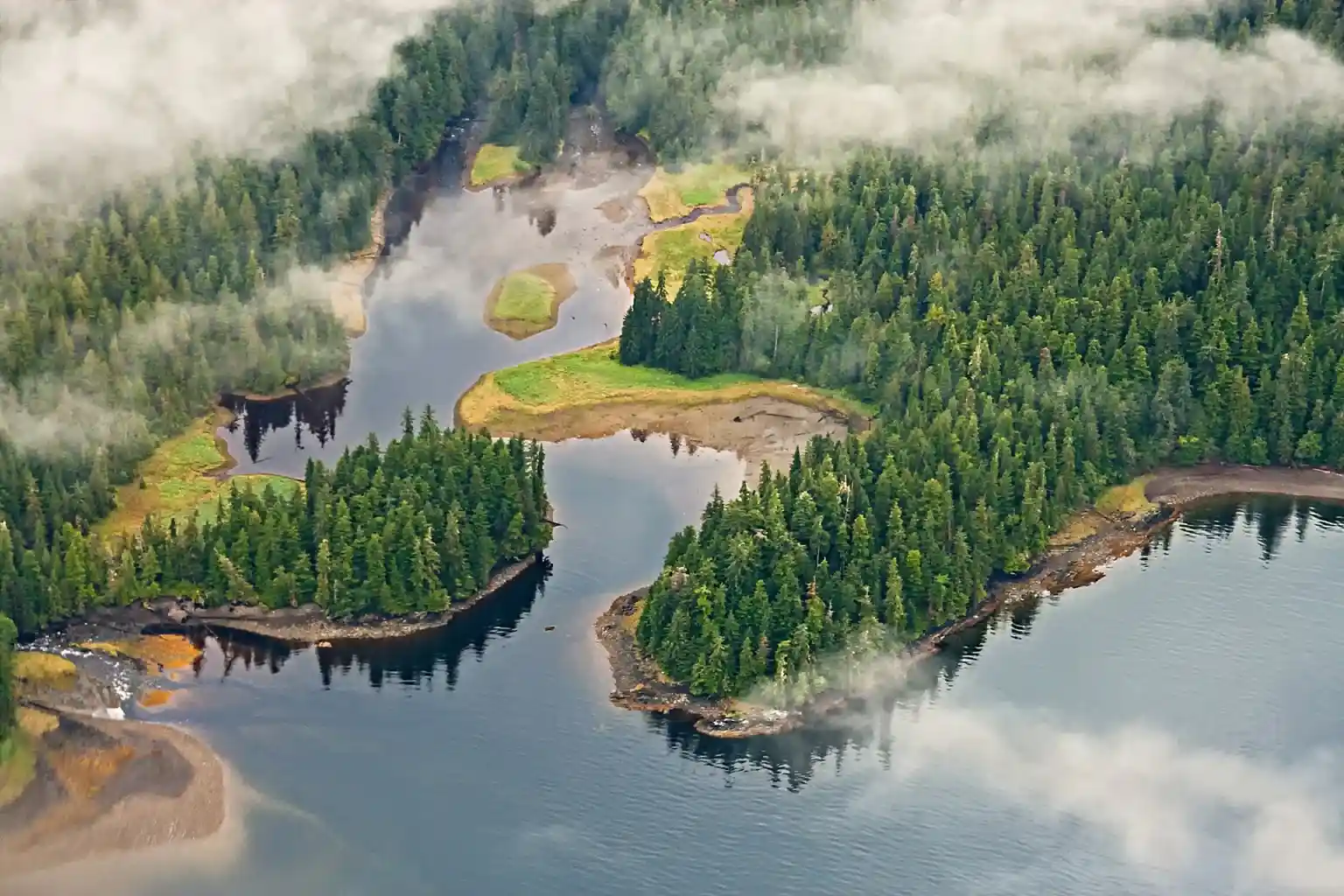
Covering a staggering 16.7 million acres, Tongass National Forest is the largest national forest in the U.S. and one of the most ecologically significant regions in Alaska. It’s home to lush rainforests, towering trees, and a rich variety of wildlife. Visitors can explore the forest’s numerous trails, go kayaking along the rivers, or embark on a sled dog ride across glaciers.
With its untouched landscapes, Tongass offers the perfect place to explore Alaska’s wild beauty and biodiversity.
11. Great Kobuk Sand Dunes
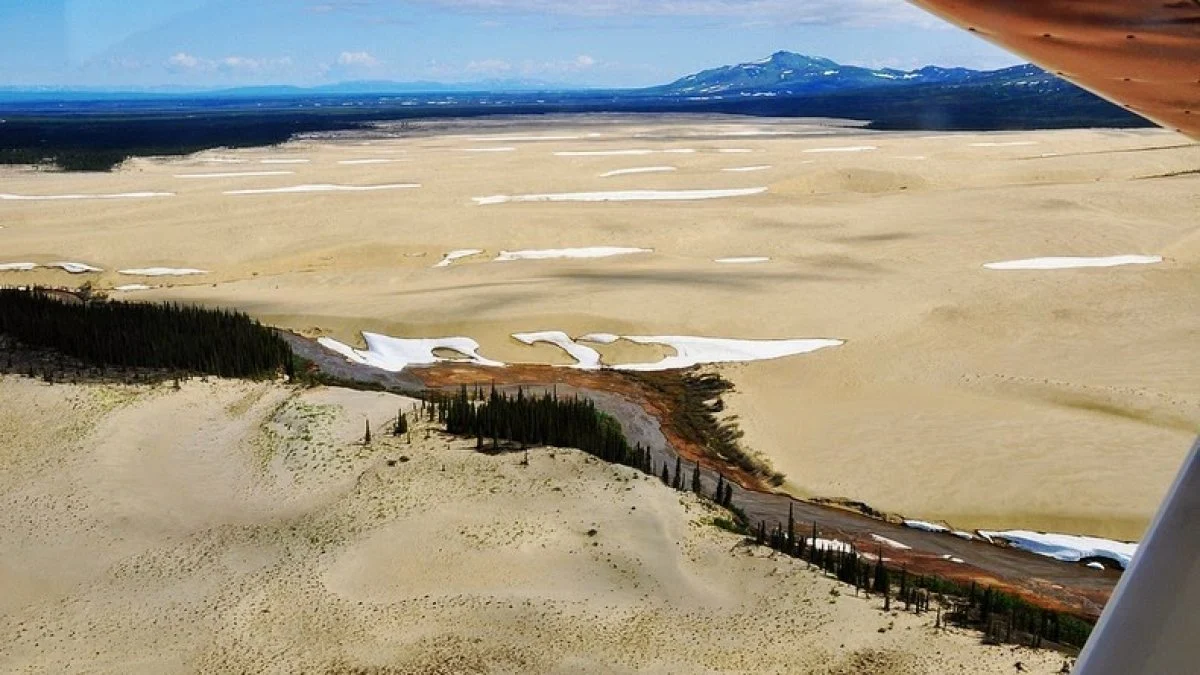
Located in the Arctic Circle, the Great Kobuk Sand Dunes stretch across 30 miles of land and offer an unexpected desert experience in the heart of the tundra. These towering sand dunes are remnants of glaciers that once covered the region and left behind this unique landscape.
Despite the harsh conditions, the dunes are home to a variety of wildlife, including wolves, moose, and bears, who leave their footprints on the sand. The vastness and isolation of the dunes provide a serene environment to reflect on nature’s endurance.
12. Chicken Stock Festivals
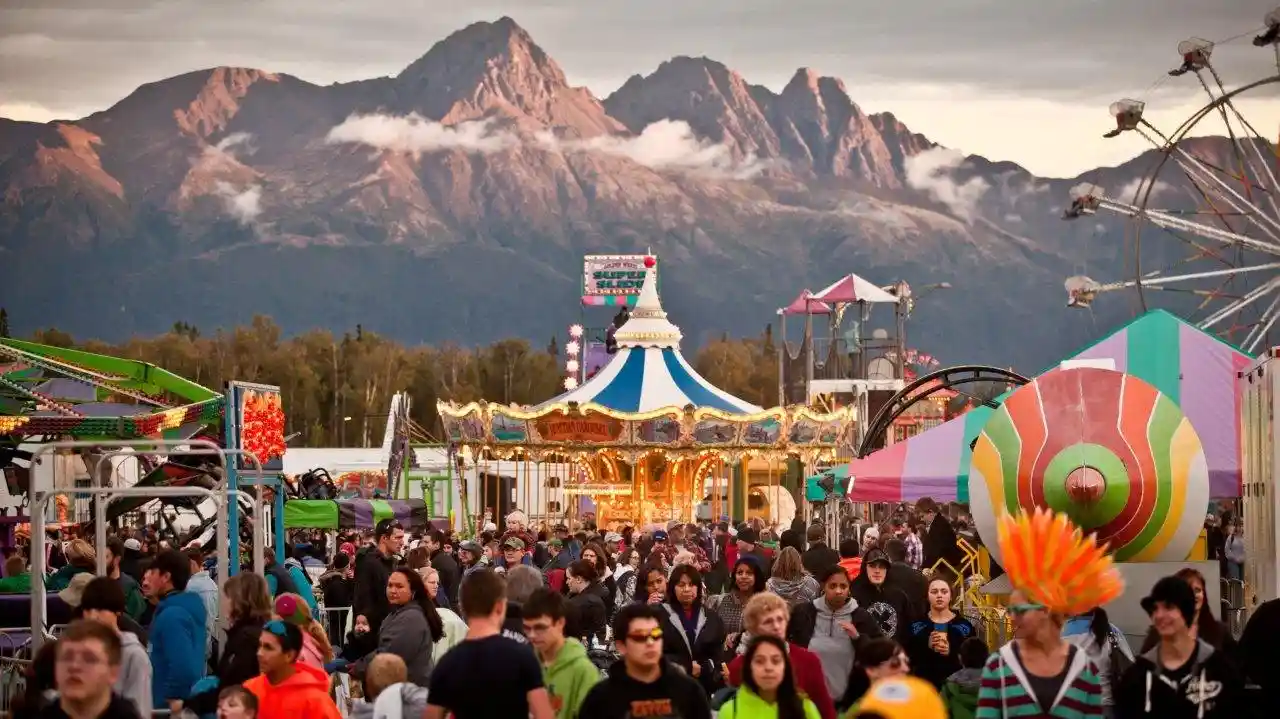
Held in the tiny town of Chicken, Alaska, the Chicken Stock Festival is a quirky event that’s as much about the activities as it is about the music. Visitors can enjoy live music, arts, crafts, and games. At its peak, the festival becomes a spectacle when helicopters drop thousands of marshmallows onto the crowd, a memorable event that fills the weekend with excitement and fun.
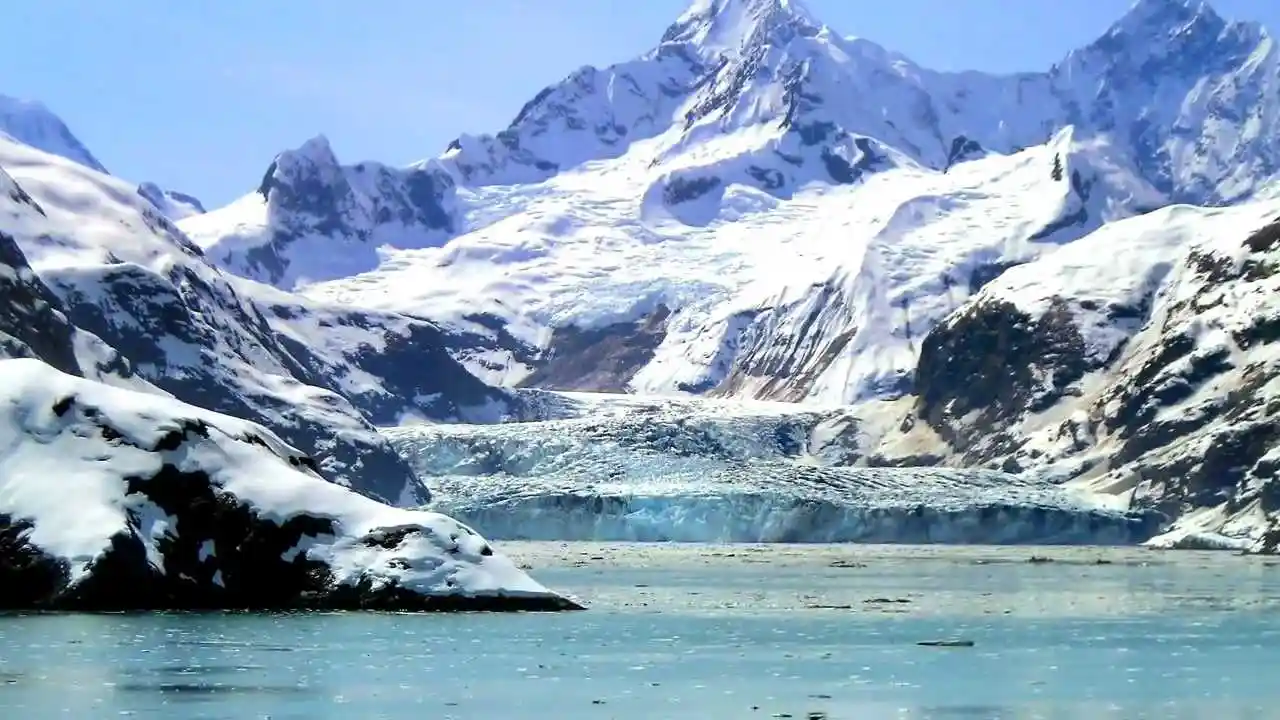
13. Glacier Bay National Park and Preserve
Covering 3.3 million acres, Glacier Bay National Park and Preserve is a UNESCO World Heritage Site known for its striking glaciers, marine life, and dramatic landscapes. The park’s waters are home to orcas, humpback whales, sea otters, and harbor seals.
Most visitors explore the park by cruise ships, allowing them to sail through the ice-laden waters and witness calving glaciers in action. The park also offers educational programs led by National Park Rangers, providing deeper insights into the region’s geology and history.
14. Jewell Garden
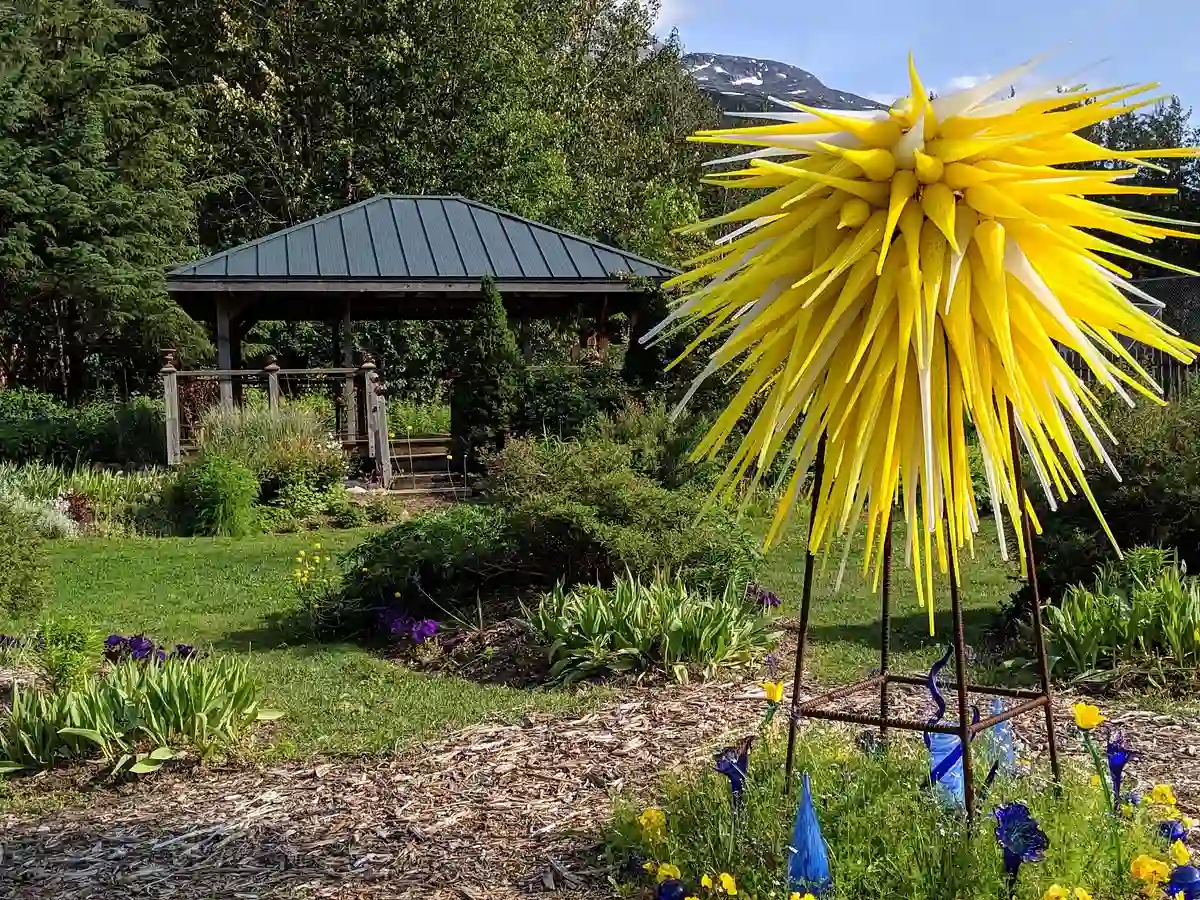
Located in Skagway, Jewell Garden is a magical oasis where the beauty of nature meets artistic creativity. The garden features stunning plant life, but what sets it apart is the open-air glassblowing studio, where visitors can witness the transformation of molten glass into exquisite works of art. You can also enjoy a refreshing tea service featuring fresh, local ingredients.
15. Sea Crab Fishermen’s Tour
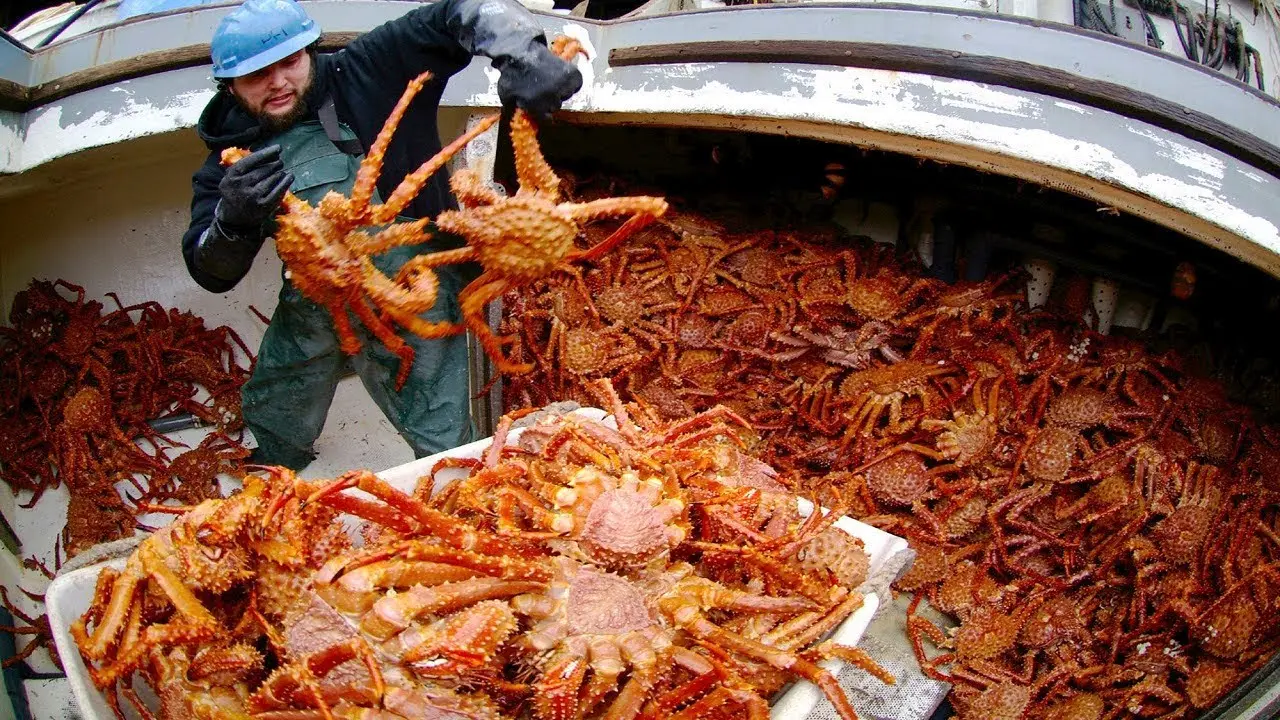
For those fascinated by life on the high seas, the Sea Crab Fishermen’s Tour offers a behind-the-scenes look at the dangerous yet exciting world of Alaskan crab fishing. This tour, featured on the popular Discovery Channel series “Deadliest Catch,” gives visitors the chance to ride along with real fishermen and see what it’s like to work on the icy waters of the Bering Sea.
16. Aurora Express Bed and Breakfast
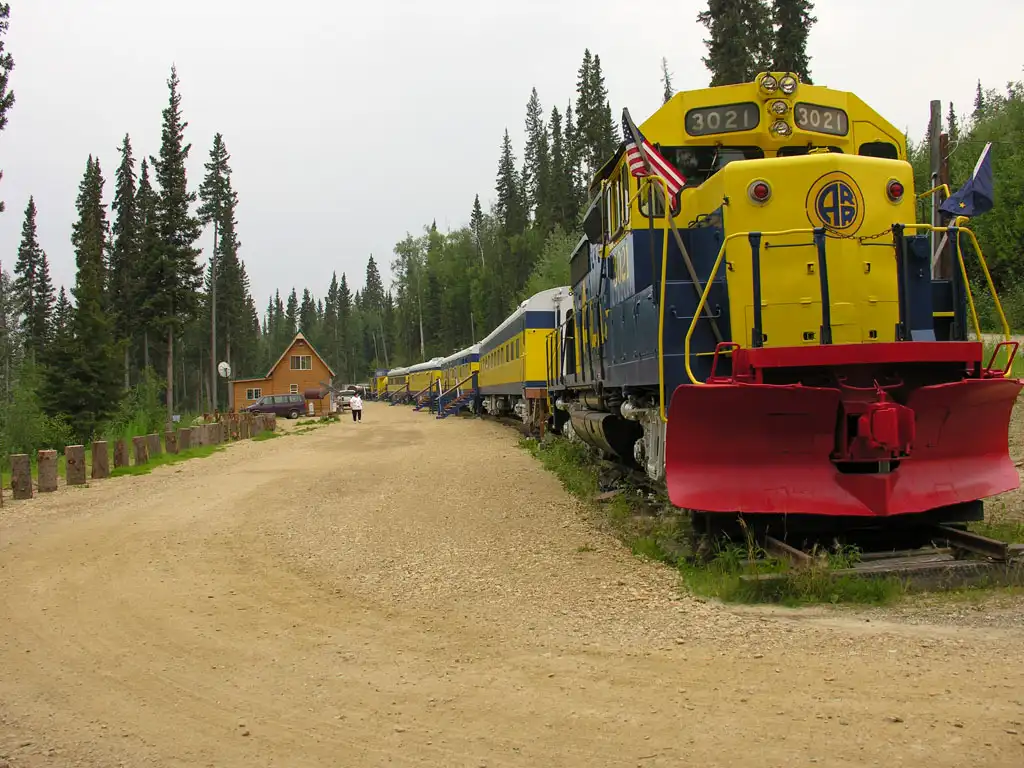
Stay in a historic railroad car at Aurora Express Bed and Breakfast in Fairbanks. The carriages, once used in World War II, have been carefully renovated to preserve the history of Alaska while offering a unique lodging experience. Each carriage is themed after a different historical period in Alaska, offering an immersive and cozy stay.
17. World’s Largest Chocolate Waterfall
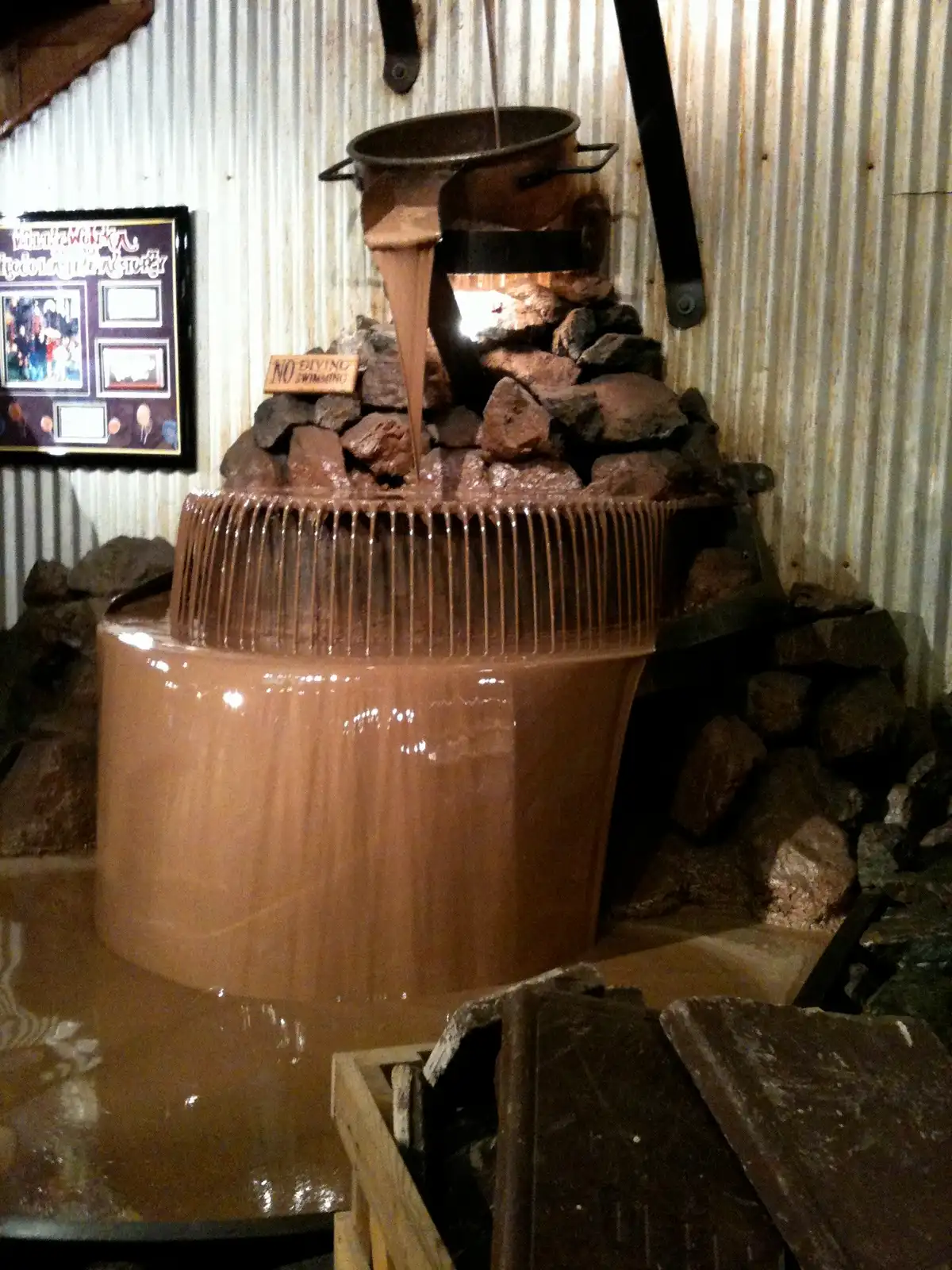
Anchorage is home to the world’s largest chocolate waterfall, built in 1994 by Peter Eden. Standing 20 feet tall, this chocolate waterfall is a sight to behold as it pours 3,000 pounds of chocolate through a brass kettle, offering a mesmerizing spectacle for visitors of all ages.
18. Petroglyph Beach
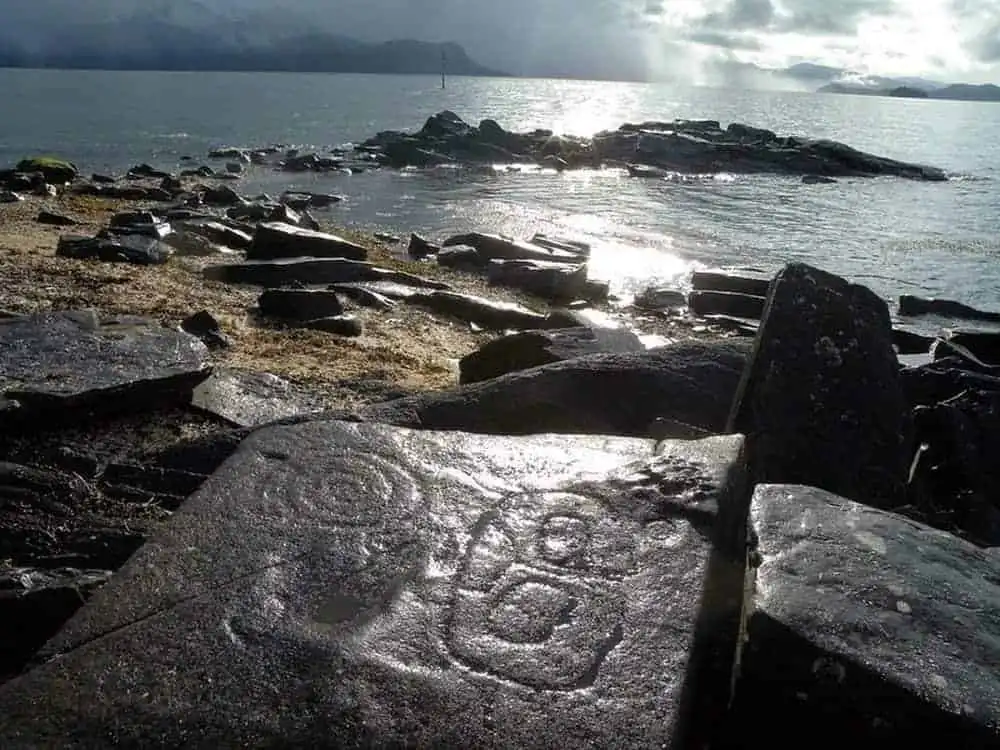
Located in Wrangell, Petroglyph Beach is home to over 70 ancient petroglyphs carved into stone over 8,000 years ago by the Tlingit people. The carvings are only visible during low tides, making it a rare and special sight to witness.
19. Husky Homestead
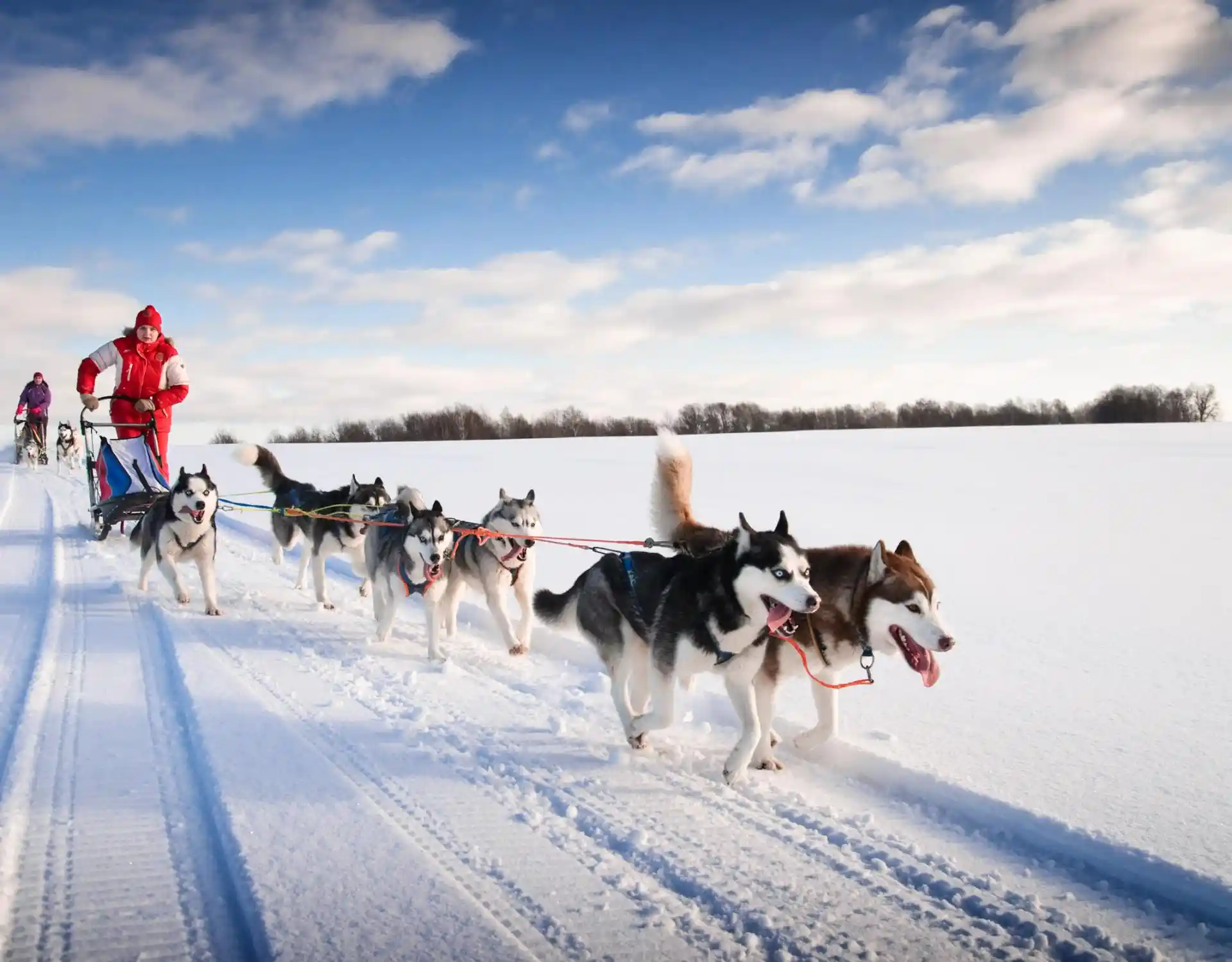
For a unique Alaskan experience, visit Husky Homestead, located in Denali. Founded by four-time Iditarod champion Jeff King, the homestead is home to a team of huskies used for traditional dog sledding. Learn about the sled dog culture and history, and even get a chance to meet and interact with the dogs.
20. Sealaska Heritage Institute
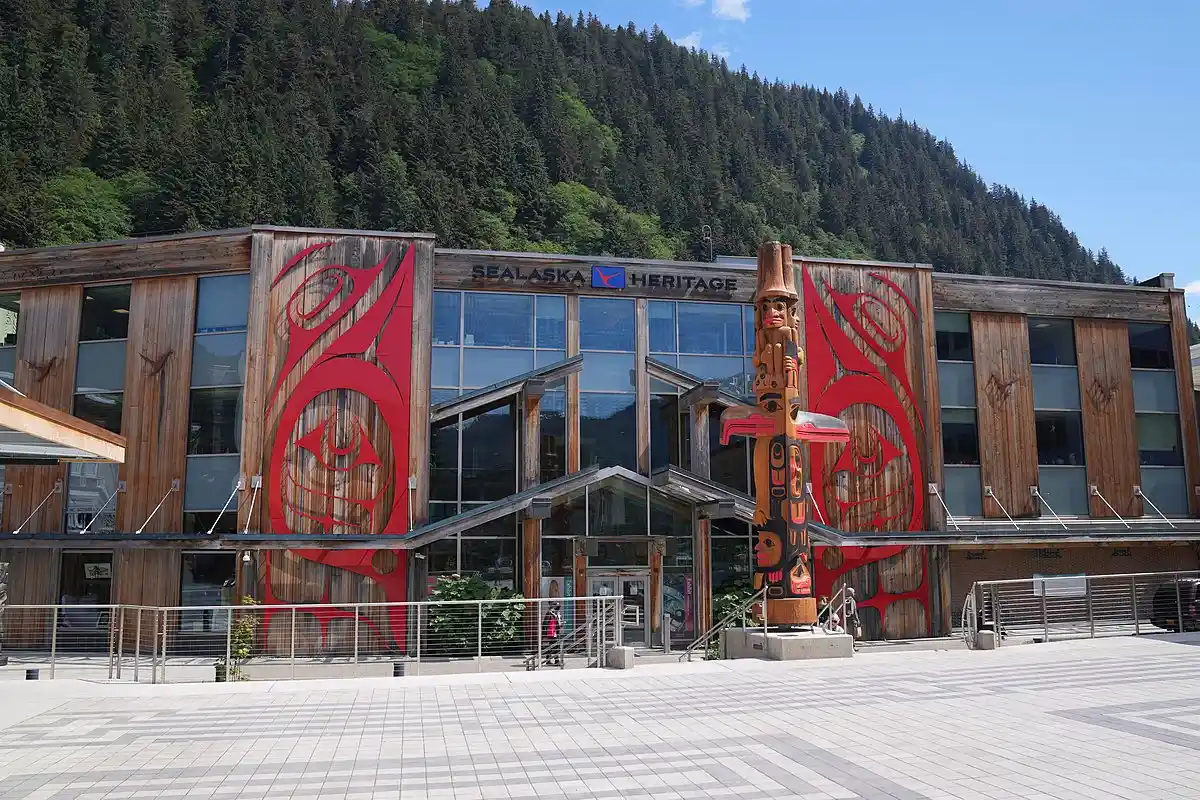
In Juneau, the Sealaska Heritage Institute is dedicated to preserving and sharing the art, history, and culture of the indigenous peoples of Alaska. With collections that include ancient tools, ceremonial masks, and artwork, the institute provides an immersive look into the lives of the state’s first settlers.
Conclusion
Alaska offers an unparalleled travel experience, combining stunning natural beauty, rich cultural heritage, and a wide array of thrilling adventures. From the majestic Denali National Park and the historic White Pass & Yukon Route Railroad to the spectacular Northern Lights and wildlife encounters, the “Last Frontier” is a destination like no other. Whether you’re an outdoor enthusiast, a history buff, or someone seeking to immerse themselves in unique experiences, Alaska provides unforgettable opportunities to explore and discover its untamed wonders. With countless activities, scenic landscapes, and cultural treasures, Alaska remains one of the most exceptional places to visit on Earth.
FAQs
1. When is the best time to visit Alaska? The best time to visit Alaska is during the summer months (May to September) when the weather is milder, and outdoor activities like hiking, fishing, and whale watching are in full swing. For those wanting to experience the Northern Lights, the winter months (September to April) are ideal.
2. What are some must-do activities in Alaska? Some must-do activities include visiting Denali National Park, whale watching in Juneau, taking a cruise to Hubbard Glacier, experiencing the Northern Lights, and exploring the historic town of Kennicott. Alaska also offers great opportunities for wildlife watching, dog sledding, and hiking.
3. How can I see the Northern Lights in Alaska? The best time to see the Northern Lights is from September to April, with locations such as Fairbanks being prime spots. During these months, you can witness the mesmerizing aurora borealis in clear, dark skies.
4. Is it safe to travel to Alaska? Yes, Alaska is a safe destination for travelers. However, due to its remote nature and extreme weather conditions, it’s important to plan your trip carefully, particularly for outdoor activities. Always check weather forecasts, be prepared for sudden changes, and book tours with reputable companies.
5. Can I visit Alaska on a cruise? Yes, Alaska is a popular cruise destination, offering scenic journeys through the Inside Passage, along the Kenai Peninsula, and past stunning glaciers. Cruises provide an excellent way to see many of Alaska’s coastal sights and wildlife.
6. What is the food like in Alaska? Alaskan cuisine is influenced by the state’s natural bounty. Popular foods include fresh seafood (like salmon, halibut, and crab), reindeer sausage, and locally sourced produce. You can also try traditional Alaska Native foods, such as salmon berries and seal oil.

